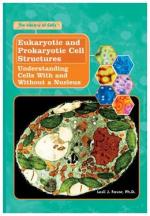|
This section contains 894 words (approx. 3 pages at 300 words per page) |

|
The prokaryota are one of the two major groups of biological organisms. The other is the eukaryota. Prokaryotes consist of two kingdoms: the archaebacteria and the eubacteria. Prokaryotes contribute the greatest biomass (amount of living matter) of any biological group and inhabit virtually all known earthly environments.
Characteristics of Prokaryotic Cells
Prokaryotes exhibit a comparatively simple cellular organization compared to eukaryotes. For example, they lack membrane-bound organelles such as chloroplasts and mitochondria. They also lack a nucleus, and their DNA exists in the form of a single, circular chromosome that floats freely in the cytoplasm. Sometimes additional DNA is present in the cell in the form of smaller loops called plasmids. All prokaryotes are characterized by a cell membrane and a cell wall. Prokaryotic cell walls are composed of peptidoglycans, which are composed of amino acids and sugar. While some eukaryotes also possess cell walls, theirs are composed...
|
This section contains 894 words (approx. 3 pages at 300 words per page) |

|


